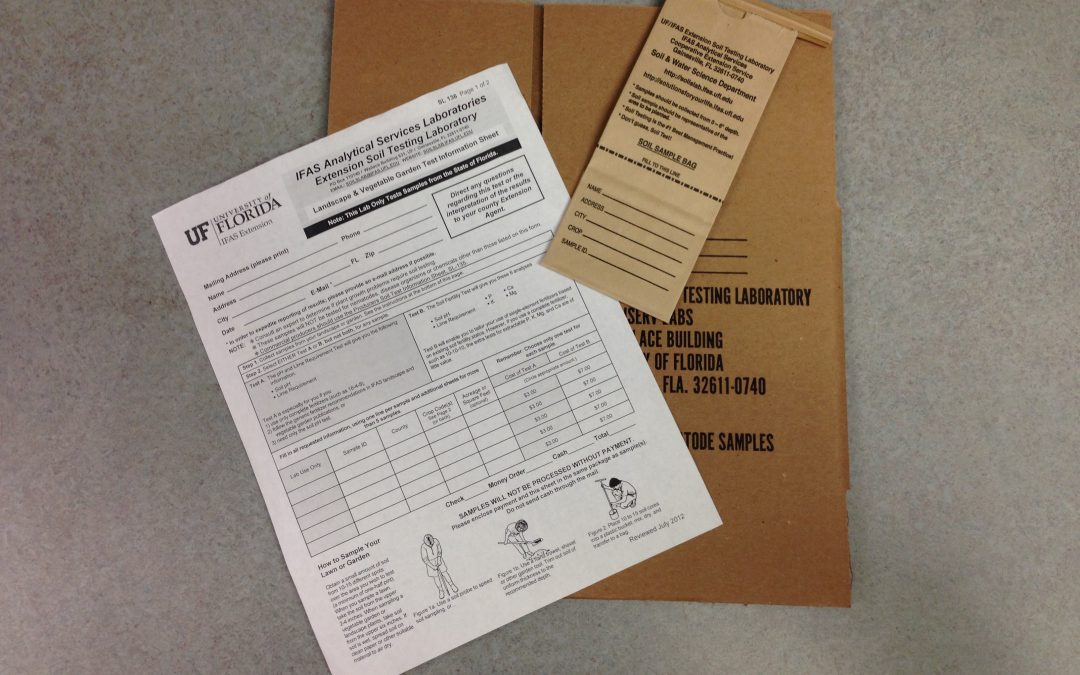
by Beth Bolles | Dec 30, 2015
Information on gardening practices is freely shared between gardeners and many times the good advice is helpful in plant selection and improving plant growth. There are some passed along practices that are not always suitable for every situation and gardeners may need to investigate a little deeper before implementing the good advice.
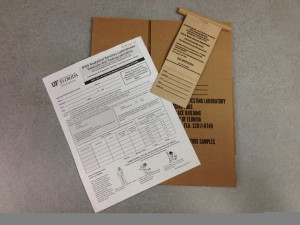
Soil test kit available form your local Extension office. Photo: Mary Derrick, UF/IFAS.
One common recommendation from gardeners is to apply Epsom salts to the soil to improve plant growth. Gardeners may have used Epsom salts for various plants in the garden and viewed plants that appear to grow better or have improved leaf color. Therefore a general recommendation to help others who have some general plant problems or off color leaves is to apply Epsom salts.
Before you apply Epsom salts to your garden, understand that it is an inorganic fertilizer, specifically magnesium sulfate. Plants make their own food but they derive most of their nutrients needed for important functions form the soil. Magnesium is one of the nutrients that is essential in photosynthesis. At times, our sandy soils may be lacking in nutrients but there may be plenty of nutrients available for plants.
The recommendation to apply Epsom salts may sound like a good idea but gardeners should always make sure that magnesium is needed before any applications. Too much magnesium in the soil can interfere with the uptake of other nutrients by plants. You could create more of a problem by indiscriminately applying Epsom salts when magnesium is not needed.
As you hear often from the University of Florida Extension, conduct a soil test before applying fertilizer to determine the major nutrient levels available in your soil. This $7.00 test will help you better manage plant nutrition. If you need assistance interpreting soil test results, contact your local county Extension office.

by Julie McConnell | Dec 30, 2015
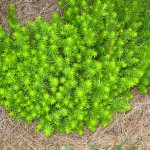 Sedum rupestre ‘Angelina’ is an evergreen perennial that adds some pizazz to winter landscapes. This low growing plant performs well in sunny, well-drained spots in the landscape but will also tolerate some shade. In the summer, the foliage is a brilliant chartreuse but after a few cold snaps it takes on a coppery bronze tinge that brightens up winter landscapes.
Sedum rupestre ‘Angelina’ is an evergreen perennial that adds some pizazz to winter landscapes. This low growing plant performs well in sunny, well-drained spots in the landscape but will also tolerate some shade. In the summer, the foliage is a brilliant chartreuse but after a few cold snaps it takes on a coppery bronze tinge that brightens up winter landscapes.
Angelina sedum is an easy to grow groundcover that contrasts nicely with deep greens, burgundy, or black foliage. It grows well along the ground or in containers where it may drape down the sides. It roots where the stems touch the ground, but is not aggressive and can be easily divided and transplanted into new garden sites or shared with friends.
Small, delicate yellow flowers appear in the late spring or early summer but the plants are mostly grown for foliage texture and color.

by Sheila Dunning | Dec 16, 2015
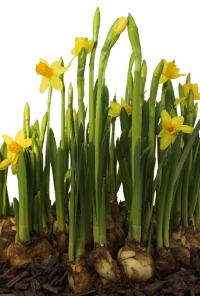
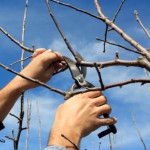 Though the calendar says December, the weather in Northwest Florida fluctuates between winter and spring temperatures. The nice days are wonderful opportunities to accomplish many of those outside landscape chores in preparation for spring. But, it is also a good time to start planning for next month’s colder temperatures. Since we don’t experience frozen soil, winter is the best time to transplant hardy trees and shrubs. Deciduous trees establish root systems more quickly while dormant; versus installing them in the spring with all their tender new leaves. Here are a few suggestions for tasks that can be performed this month:
Though the calendar says December, the weather in Northwest Florida fluctuates between winter and spring temperatures. The nice days are wonderful opportunities to accomplish many of those outside landscape chores in preparation for spring. But, it is also a good time to start planning for next month’s colder temperatures. Since we don’t experience frozen soil, winter is the best time to transplant hardy trees and shrubs. Deciduous trees establish root systems more quickly while dormant; versus installing them in the spring with all their tender new leaves. Here are a few suggestions for tasks that can be performed this month:
- Plant shade trees, fruit trees, and evergreen shrubs.
- Plant pre-chilled daffodil and narcissus bulbs (late December/early January).
- Do major re-shaping of shade trees, if needed, during the winter dormancy.
- Water live Christmas trees as needed and water holiday plants such as poinsettias as needed.
- Check houseplants for insect pests such as scale, mealy bugs, fungus gnats, whitefly and spider mites.
- Continue to mulch leaves from the lawn. Shred excess leaves and add to planting beds or compost pile.
- Replenish finished compost and mulch in planting beds, preferably before the first freeze.
- Switch sprinkler systems to ‘Manual’ mode for the balance of winter.
- Water thoroughly before a hard freeze to reduce plants’ chances of damage.
- Water lawn and all other plants once every three weeks or so, if supplemental rainfall is less than one inch in a three week period.
- Fertilize pansies and other winter annuals as needed.
- Protect tender plants from hard freezes.
- Be sure to clean, sharpen and repair all your garden and lawn tools. Now is also the best time to clean and have your power mower, edger and trimmer serviced.
- Be sure the mower blade is sharpened and balanced as well.
- Provide food and water to the area’s wintering birds.
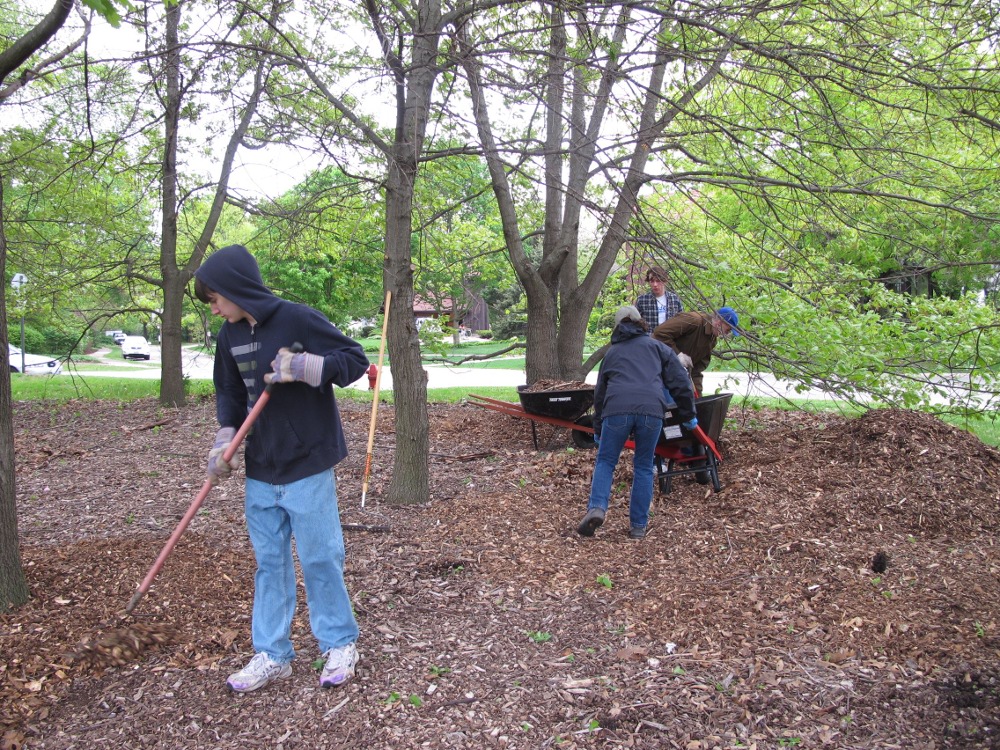
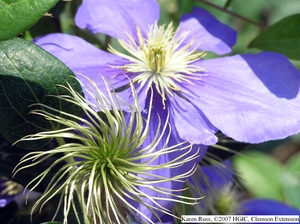
by Matt Lollar | Dec 16, 2015
With the cotton harvest coming to an end, it’s not unusual to see cotton littered on the sides of the road. You may also think you see it hanging in the trees, but you will be pleasantly surprised to find a hidden gem. Woodbine (Clematis virginiana) and coastal virgin’s bower (Clematis catesbyana) are two native species of clematis that can be found wrapped around trees in the Panhandle. They have finished flowering for the year and you will notice their showy seed lint hanging in the trees.
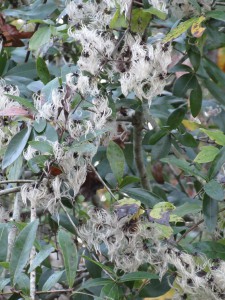
Clematis growing in an oak tree. Photo Credit: Matt Lollar, UF/IFAS
Clematis leaves are compound, consisting of 3 to 5 leaflets, dark green and glossy with toothed edges. The vines are typically 1/2 inch in diameter and can grow to 20 feet. The flowers are much smaller than those of cultivated varieties found at garden centers. Flowers are white with prominent stamens. Clematis catesbyana and Clematis virginiana have similar flowers, but the flowers of C. virginiana are fragrant.
Clematis species grow well in partial shade to full shade. Native plants are often found entwined in the forest understory near streams or ponds where soil conditions are moist. Garden varieties grow well with their roots in moist, shaded soil and their leaves and flowers in the sun. They are often seen growing on a trellis or on a fence.
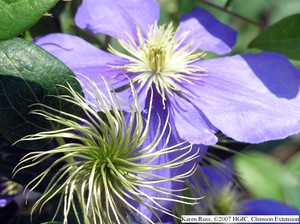
Clematis ‘General Sikorski’. Photo Credit: Karen Russ, Clemson University
It is important to note that some species of clematis are invasive. Sweet autumn clematis or Japanese clematis (Clematis terniflora) is a vigorous invasive species that was once popular in southern gardens. This species has similar characteristics to C. catesbyana and C. virginiana, but its leaflets have smooth edges. You should develop a control strategy if Japanese clematis is found in your garden. For control options, please visit EDIS – Japanese Clematis.
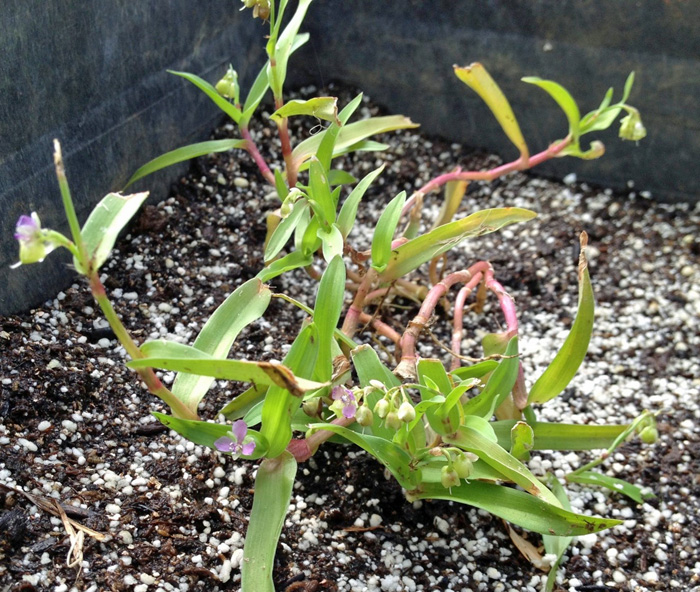
by Carrie Stevenson | Dec 4, 2015
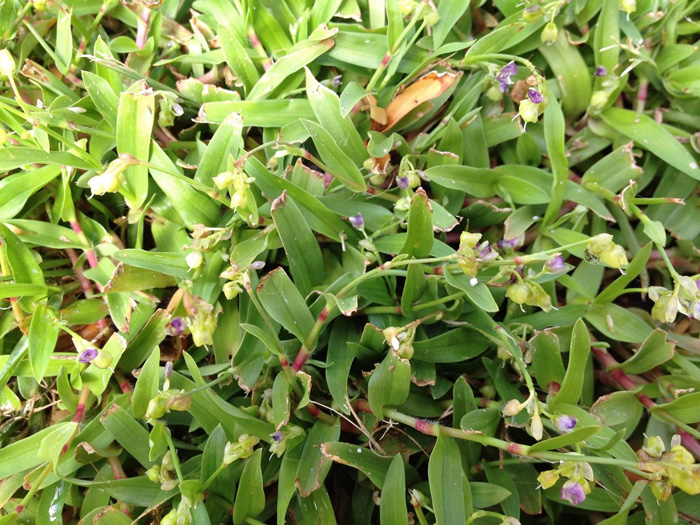
______________________Figure 1. Doveweed patch in St. Augustinegrass sod.__________________________
Ramon Leon, WFREC Weed Specialist
Doveweed (Murdannia nudiflora) is a summer annual weed species that belongs to the dayflower family. Over the last three years, this weed has become an important weed problem in residential lawns and sod production.
This weed has two key characteristics that make it successful. First, its seeds germinate late during the spring when soil temperatures reach 65-70°F. This represents a problem because at this time the effect of preemergence (PRE) herbicides applied in February or March might be too low to provide good doveweed control. Second, the leaves of this weed can be confused with St. Augustinegrass and centipedegrass leaves, and many people do not notice doveweed until the plants are large and are displacing the turf. Doveweed leaves are thick with a shiny rubbery texture. The plant produces creeping stems (stolons), and mowers can break these stolons spreading this weed across the field.
It is very important to keep in mind that doveweed prefers wet areas, so drainage issues or over-watering will favor the establishment and growth of this weed. For this reason, ensuring irrigation is not excessive is a key management practice to control this problem. Another cultural practice that plays a major role on doveweed management is mowing. Mowing too short and too frequently will favor doveweed because its leaves will grow horizontally avoiding the mower blades. Chose a mowing height that allows good ground cover , yet only removes a third of the turf leaf blades.

___________Figure 2. Individual doveweed plant showing flowers, fruits, and stolons with root in nodes.________
Control
Doveweed is easier to control before emergence than when plants are well established. Atrazine is one of the most effective herbicides to control doveweed. A maximum rate of 1 lb. of active ingredient (ai) per acre (A) and no more than 2 lb. ai per year are recommended to achieve both adequate control and avoid turfgrass injury. Atrazine should be applied right before or soon after doveweed emerges to maximize control.
For PRE control, S-metolachlor (Pennant Magnum™), dimethenamid-P (Tower™), and indaziflam (Specticle™) are herbicides that can considerably reduce doveweed establishment, especially if the application is done closer to doveweed emergence timing. These herbicides also provide good control of other important weed species such as crabgrass and goosegrass, which emerge earlier in the spring. In order to control early emerging weeds and doveweed, split applications are preferred. For example, the first application is done at the end of February or early March and the second one 4 to 6 weeks after. In this way, we can extend PRE control until doveweed starts emerging.
If we observe doveweed emerging after PRE applications, we have several postemergence (POST) herbicides that will provide control, as long as the plants are less than 2 inches in size and have not produced stolons. Products containing 2,4-D and dicamba can provide fair control of doveweed. However, repeated applications or applications in combination with other herbicides will be required for adequate control. There are commercial products with formulations that combine 2,4-D or dicamba with other herbicides such as mecoprop-p, carfentrazone (Quicksilver™), thiencarbazone and iodosulfuron (e.g., Celsius™, Tribute Total™). This type of three− or four−way combination can provide enhanced doveweed control. If doveweed has fully displaced the turf in spots, it is probably easier and more effective to kill doveweed with a directed application of glyphosate (RoundUp™) and re-seed or re-sod the area.
Because doveweed seeds can live for several years in the soil, it will take two to three years of continuoous control to eliminate doveweed populations. Although herbicides are useful tools to control doveweed, the most important factor to prevent doveweed problems is to have vigorous healthy turf. Doveweed requires a lot of sunlight, so if the turf effectively shades the ground, doveweed will have a hard time growing and producing new seed.
For more information on managing turf weeds download:













